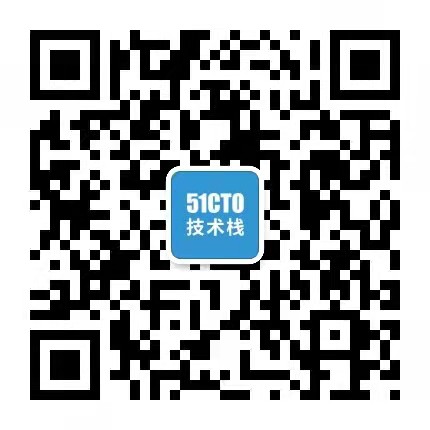前面提到AndroidGraphics2DTutorial说过它是ListActivity派生出来的。ListActivity中显示的是 ListView,ListView和Gallery ,Spinner有一个共同点:它们都是AdapterView的子类。AdapterView的显示可以通过数据绑定来实现,数据源可以是数组或是数据库记录,数据源和AdapterView是通过Adapter作为桥梁。通过Adapter,AdatperView可以显示数据源或处理用户选取时间, 如:选择列表中某项。
AndroidGraphics2DTutorial读取AndroidManifest.xml中Intent-Filter为
<action android:name=”android.intent.action.MAIN” />
<category android:name=”com.pstreets.graphics2d.SAMPLE_CODE” />
的所有Activity,以列表方式显示。使用了Android API 自带的SimpleAdapter。 来看看AndroidGraphics2DTutorial.java 中相关代码:
public class AndroidGraphics2DTutorial extends ListActivity {
private static final String SAMPLE_CATEGORY
="com.pstreets.graphics2d.SAMPLE_CODE";
@Override
public void onCreate(Bundle savedInstanceState) {
super.onCreate(savedInstanceState);
setListAdapter(new SimpleAdapter(this, getData(),
android.R.layout.simple_list_item_1, new String[] { "title" },
new int[] { android.R.id.text1 }));
getListView().setTextFilterEnabled(true);
}
protected List getData() {
List<Map> myData = new ArrayList<Map>();
Intent mainIntent = new Intent(Intent.ACTION_MAIN, null);
mainIntent.addCategory(SAMPLE_CATEGORY);
PackageManager pm = getPackageManager();
List<ResolveInfo> list = pm.queryIntentActivities(mainIntent, 0);
if (null == list)
return myData;
String[] prefixPath;
prefixPath = null;
int len = list.size();
Map<String, Boolean> entries = new HashMap<String, Boolean>();
for (int i = 0; i < len; i++) {
ResolveInfo info = list.get(i);
CharSequence labelSeq = info.loadLabel(pm);
String label = labelSeq != null ? labelSeq.toString()
: info.activityInfo.name;
String[] labellabelPath = label.split("/");
String nextLabel = prefixPath == null ? labelPath[0]
: labelPath[prefixPath.length];
if ((prefixPath != null ? prefixPath.length : 0)
== labelPath.length - 1) {
addItem(myData,
nextLabel,
activityIntent(
info.activityInfo.applicationInfo.packageName,
info.activityInfo.name));
} else {
if (entries.get(nextLabel) == null) {
addItem(myData, nextLabel, browseIntent(nextLabel));
entries.put(nextLabel, true);
}
}
}
Collections.sort(myData, sDisplayNameComparator);
return myData;
}
private final static Comparator<Map> sDisplayNameComparator
= new Comparator<Map>() {
private final Collator collator = Collator.getInstance();
public int compare(Map map1, Map map2) {
return collator.compare(map1.get("title"), map2.get("title"));
}
};
protected Intent activityIntent(String pkg, String componentName) {
Intent result = new Intent();
result.setClassName(pkg, componentName);
return result;
}
protected Intent browseIntent(String path) {
Intent result = new Intent();
result.setClass(this, AndroidGraphics2DTutorial.class);
return result;
}
protected void addItem(List<Map> data, String name, Intent intent) {
Map<String, Object> temp = new HashMap<String, Object>();
temp.put("title", name);
temp.put("intent", intent);
data.add(temp);
}
@Override
protected void onListItemClick(ListView l, View v,
int position, long id) {
Map map = (Map) l.getItemAtPosition(position);
Intent intent = (Intent) map.get("intent");
startActivity(intent);
}
}
- 1.
- 2.
- 3.
- 4.
- 5.
- 6.
- 7.
- 8.
- 9.
- 10.
- 11.
- 12.
- 13.
- 14.
- 15.
- 16.
- 17.
- 18.
- 19.
- 20.
- 21.
- 22.
- 23.
- 24.
- 25.
- 26.
- 27.
- 28.
- 29.
- 30.
- 31.
- 32.
- 33.
- 34.
- 35.
- 36.
- 37.
- 38.
- 39.
- 40.
- 41.
- 42.
- 43.
- 44.
- 45.
- 46.
- 47.
- 48.
- 49.
- 50.
- 51.
- 52.
- 53.
- 54.
- 55.
- 56.
- 57.
- 58.
- 59.
- 60.
- 61.
- 62.
- 63.
- 64.
- 65.
- 66.
- 67.
- 68.
- 69.
- 70.
- 71.
- 72.
- 73.
- 74.
- 75.
- 76.
- 77.
- 78.
- 79.
- 80.
- 81.
使用数据显示Layout,上面代码中
setListAdapter(new SimpleAdapter(this, getData(),
android.R.layout.simple_list_item_1, new String[] { “title” },
new int[] { android.R.id.text1 }));
为ListActivity中ListView 指定Adapter,这个Adapter的数据源为getData(),getData()从Manifest.xml中查找出所有符合条件的示例 Activity列表。 这里DataSource是静态的从文件中读取,如果DataSource为数组或是其它数据源,如果程序中修改数值的内容,则你应该 notifyDataSetChanged()来通知UI数据有变动。UI则会刷新显示以反映数据变化。简单的说Android数据绑定和.Net WinForm ,WPF 中数据绑定类似。
处理用户选取事件,AdapterView.OnItemClickListener()可以用来处理选取事 件,对于ListActivity,可以用protected void onListItemClick(ListView l, View v, int position, long id)。AndroidGraphics2DTutorial中的实现是用户选取Activity名称好,则启动对应的Activity。
上面代码中使用SimpleAdapter,并使用Android提供的android.R.layout.simple_list_item_1 来显示数据,Andrid也允许使用自定义的Layout来显示数据,对这个例子来说,可以使用图片加说明来显示列表,将在后面介绍如果使用自定义 Adapter和自定义Layout来显示绑定的数据。

























